If you have never been to Hawk Mountain, Pennsylvania during fall migration I would strongly recommend a visit. We have just returned from hosting this past weekend’s inaugural Extreme Raptor Weekend and Hawk Mountain was one of our chosen partner venues. Besides the presence of several noted birding personalities, interesting seminars and phenomenal prize give-aways, the real stars of the show were undoubtably the birds. Sharp-shinned Hawks, Cooper’s Hawks, Bald Eagles, Golden Eagles, Merlin and Peregrine, amongst others, dazzled the crowds on this, one of the busiest weekends at this important sanctuary.
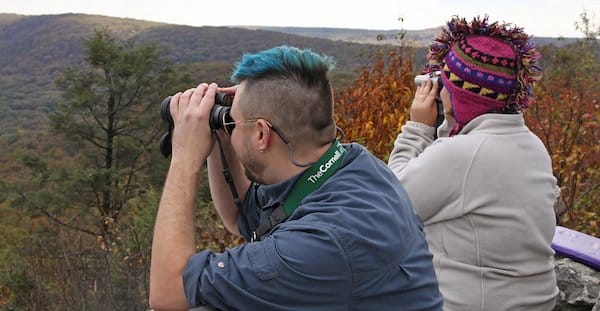 Hawk Mountain attracts a colorful crowd during fall migration
Hawk Mountain attracts a colorful crowd during fall migration
Hawk Mountain is renowned as the world’s first refuge for raptors. The sanctuary has a tumultuous history that dates back to the time of the Great Depression. In 1929 the local government placed a $5 bounty on the goshawk’s head—a significant amount of money in those times. Hunters flocked to the Kittatinny Ridge to literally blast raptors out of the sky, buoyed by the belief that they were doing the world a great service. Raptors were perceived to be vermin. It was two years later that a gentleman named Richard Pough exposed the massacre of birds of prey and he, along with other prominent conservationists, began lobbying for the end of what they perceived to be pointless and ruthless killing. Pough’s photographs of scores of dead raptors shot by hunters at Hawk Mountain were noticed by a conservation activist, Rosalie Edge, who initially leased, and then purchased, 1,400 acres of the land in the mid-1930’s. The hunting stopped immediately and she opened Hawk Mountain to the public for generations to enjoy the splendor of the scenery and the magnificent flights of raptors that come through in spring and fall migration.
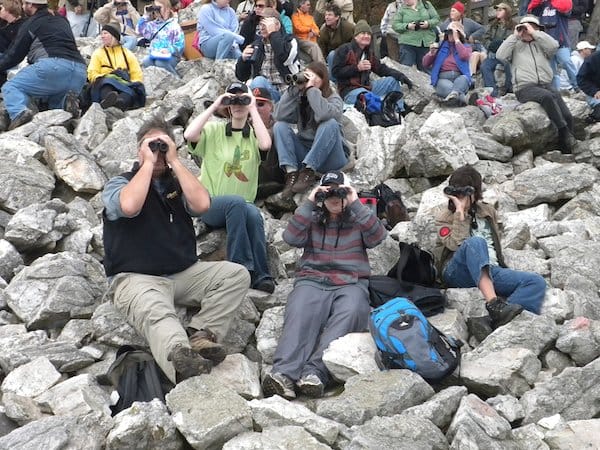 Birders at one of the look-outs at Hawk Mountain
Birders at one of the look-outs at Hawk Mountain
Today Hawk Mountain receives thousands of visitors on a single day during peak migration and is well-known for its spectacular, and often close-up, sightings of many different raptor species. But its not just the raptors that make a visit here so memorable. For this place is stunning. The fall colors and the views are mind-blowing.
On Saturday we braved the cold, 30-mile-an-hour winds and overcast weather. Due to the breezy winds, the conditions were far from ideal for a good flight of raptors but highlights were a Golden Eagle, a few Bald Eagles, about two dozen Sharp-shinned Hawks, Peregrines, Merlin, Northern Harriers, two late Broad-winged Hawks, Ospreys, Cooper’s Hawks, American Kestrels, about two dozen Red-tail Hawks and the ubiquitous Turkey and Black Vultures. Even though the numbers were low there was really good diversity. On Sunday the winds died down and we were treated to a steady stream of raptors the whole morning, predominately Sharp-shinned Hawks (close to 300 were spotted coming through) but also a few Cooper’s Hawks and good numbers of Red-tail Hawks.
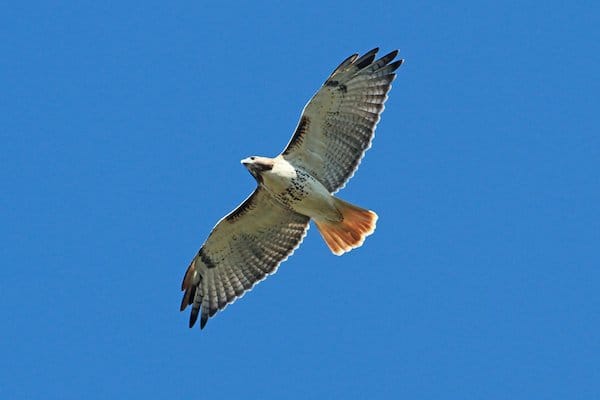 A Redtail Hawk in flight overhead by Adrian Binns
A Redtail Hawk in flight overhead by Adrian Binns
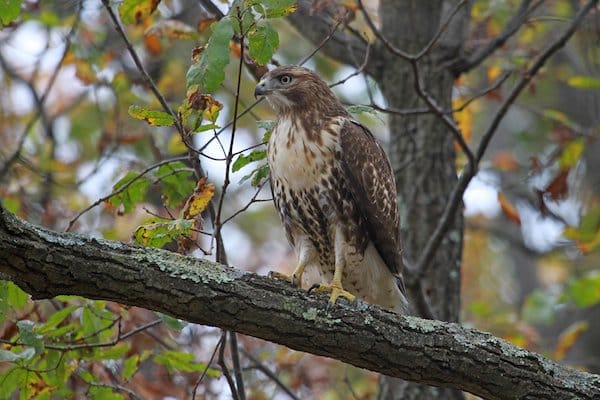 A nice Redtail in the parking lot by Adrian Binns
A nice Redtail in the parking lot by Adrian Binns
But, for me personally, the highlight of the weekend at Hawk Mountain was undeniably the numbers of kids that were there. There were literally hundreds of kids there on both days, the majority sporting optics and talking birds. I had once thought that there were WAY too few young birders coming through. But this weekend has reawakened my faith that the state of birding in America is in good shape and that birding truly is a multi-generational pastime.
Many thanks to Nikon, Cabela’s and Hawk Mountain for making this event so special.


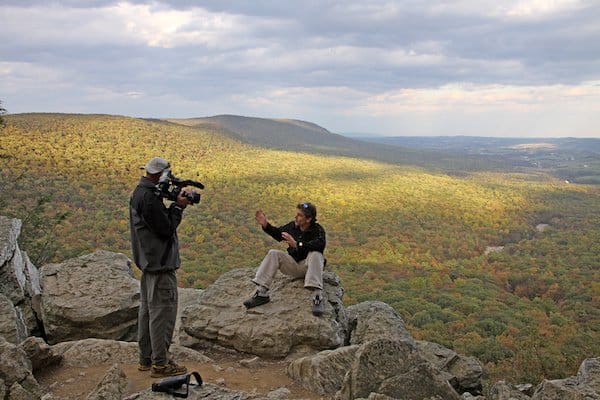
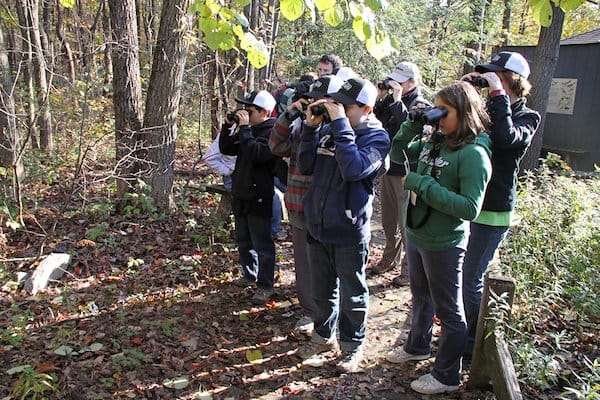











Nice to see a punk birder there and so many young people.
Oops. Forgot this. In case that blue-haired Mohawk is interested.
http://www.punkrockbigyear.blogspot.com
Awesome to see so many young people there!
That punk birder is France Dewaghe—programmer for All About Birds website, captain of the Lab’s birding & biking World Series team, and proudly sporting a Cornell Lab bino strap in the photo. Go France!
Kids are the future of birding! Thanks to James, and all the Nikon pro-staffers who worked hard to make Extreme Raptor weekend such a big success. The PA Young Birders in the phoot enjoyed a great day on the mountain, and a wonderful time at Cabela’s seeing Jonathan Woods Raptor Show and Birding Adventures TV quiz. France Dewaghe provided plenty of laughs with his blue hair!